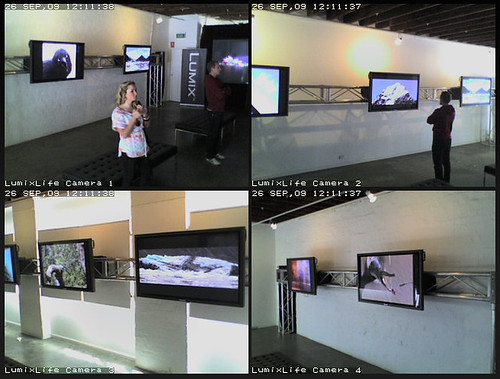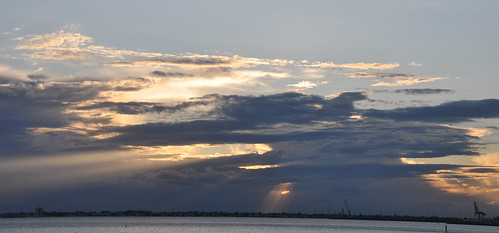RAW versus JPG: Digital Camera File Format Faceoff
This is a cross post of a joint blog post from Neerav’s article…
RAW and JPG are different ways of creating photos in a digital camera. Each has advantages and disadvantages. In the Blue corner we have Wolfcat who argues in favour of the RAW file format and in the Red corner we have Neerav who argues in favour of the JPG file format.
Pro-JPG Argument
For some background so you understand where I’m coming from: I love to take photos, mostly of urban streets, wilderness and wildlife.
I take 99.9% of my photos in JPG format and have used these successfully to create A4 posters, a photo book, sold photos for use in technology websites and magazines to accompany my articles, and had some displayed in an art gallery on 32-50inch TV screens.
I understand that RAW has some technical benefits but for the vast majority of photographers out there JPG will be the best option because:
- for 99% of people JPG image quality is already far more than they need
- it’s convenient because images don’t require any post-processing
- the vast majority of keen amateur photographers don’t have the time or inclination to sit at a computer for hours after a day spent taking photos, post-processing RAW camera files into JPG photos manually one by one.
- RAW files cannot be immediately shared to the Internet because they require processing with a computer that is reasonably fast. When I take photographs at events I can share the best JPGs to Flickr within minutes using my cheap, underpowered netbook computer,
- the more affordable digital cameras used by keen amateur photographers are noticeably slower at taking RAW format photos than JPG’s. I guarantee “RAW only” hardliners have missed out on photo opportunities because their camera takes time recording each massive RAW file,
- JPG file sizes are far smaller and therefore take up less space on your camera card, in your photo archive, and when transferring them internally on your home network or on the internet.
- Arguments that storage space is getting cheaper are irrelevant. Try calculating how many camera cards you’d need to store 100 photos/day, every day for a month on holiday and you’ll see what I mean,
- JPG files can be viewed on any desktop or laptop computer as well as many electronic devices including smartphones, TV’s, dvd/bluray players etc,
- RAW encourages lazy “i can always do it properly on the computer” photography. I own Photoshop CS5 and find it useful, but much prefer to get the camera settings right first time in the camera and not have to spend time fiddling later
There are over a hundred different variations of RAW file formats needing special software to convert them to JPG. Often new cameras record in a RAW format that can’t be opened by older image processing applications like Adobe Photoshop.
If you must use RAW then DNG is the best RAW format for archival purposes. The US Library of Congress classified proprietary RAW files as “Less desirable file formats” suggesting that DNG be used instead.
The only times I would ever consider using a RAW format such as DNG are:
- if I was being paid to do a commercial photography job. Even then I’d use DNG+JPG which takes each photo in both formats so I could use the JPG’s immediately and the DNG’s only if required.
- If I was on holiday and paying lots of money for a unique one off experience eg: hot air balloon ride then I’d set my camera to DNG+JPG.
I leave the final word to respected amateur photographer and camera reviewer Ken Rockwell:
If you shoot hundreds or thousands of images in a day shoot JPG and don’t worry. The quality is the same for almost all intents and purposes as raw, and the raw files would take gigabytes or tens of gigabytes and resultant hours to download, convert, catalog and burn to backup CDs. In fact, if you shoot this much then JPG can give better quality since attempting to shoot this much raw will constipate your workflow and you could miss making some images entirely as your cards fill up. You’d always be running out of memory cards or time waiting for the access light to stop blinking.
If you love to tweak your images one-by one and shoot less than about a hundred shots at a time than raw could be for you. In fact, if you prefer the look you can get from raw (it may be different from JPG in some cases depending on software) you can let your computer batch process images and save the results as JPGs, too. I almost never shoot anything in raw, and when I do I never see any difference for all the effort I wasted anyway. (I can see differences if I blow things up to 100% or bigger on my computer, but not in prints.)
Further reading
The RAW Flaw – Luminous Landscape
Are Raw Files Forever? – Luminous Landscape
DNG – Sustainability of Digital Formats – Planning for Library of Congress Collections
Raw as Archival Still Image Format: A Consideration (University of Connecticut Libraries)
Adobe TV – Advantages of DNG format
Pro-RAW Argument
First confession I shoot RAW and JPG. However 99% of the time I just ignore the JPG files, cause I never use them, never see them and they just end up taking up space on my harddrive.
I’m a keen landscape shooter. I like to document the world around me looking for that unique angle on this great country we live in. Whilst I shoot in colour.. I’m a huge fan on the black and white as well for real story telling.
- There is only one kind of RAW. The kind your camera shoots. I shoot with a Nikon D90, so I get .NEF files. I really don’t care about other RAW formats. Why, because that is like saying I drive a Diesel powered car, but there are too many kinds of Petrol to confuse me.
- Quality doesn’t matter. No of course it doesn’t, unless you care about the photo. Unless that photo is a touch under/over exposed, the white balance is out, the horizon line is a few degrees of centre, the lens you used has a certain type of distortion that throws out straight lines or the highlights are a bit over exposed. Any of these mean you are going to want to “fix” the photo.
- Sure Ken Rockwell can shoot in full manual mode and get White Balance and everything perfect every time, never needing to touch Photoshop at all to fix any image…. But are you Ken Rockwell.
- You’re are sure that you know what the correct colour temp for each setting is, because you shoot in a perfectly stable environment, with colour charts and controlled lighting every time. Nope didn’t think so. Guess what you are going to want to correct that photo.
- Batch Processing is your friend. I use Lightroom3 to processes all my RAW images. If they are similar I can spend time on one image get the settings right and apply them to hundreds of photos in a few minutes.
- Raw is non destructive, you aren’t dealing with a lossy compression like JPG you have all the information to play with. You don’t have to trust the camera to guess what you wanted, you have complete control. JPG is also 8bit colorur. The RAW files I shoot are 12bit colour.
- Cost of storage is cheap. I have an offsite backup of my photos on a 1.5TB drive that I purchased for $98 dollars. I run a few 4gb cards and can shoot around 240 images per card. And I always take a harddrive with me on trips to backup the images anyway, that drive is a USB powered HD that is 880gb which cost me $120.
- JPG is easier. Yes it is, but then so is buying a pizza from the supermarket compared to making one at home. The one you make at home will have all the toppings you want and be to your taste, not the cheapest food to make the pizza.
- And finally how often do you need to “get” the shot up straight away. If you are really doing that, you are shooting from a mobile phone anyway. Most of the time you are going to have access to something to process the image regardless. ( I know I do )
- If you only store the JPG’s in 6 months time or a years time when someone spots that great image and wants the full size image for print… what did you do with it, oh yes that is right, you compressed it put lots of effects in photoshop and compressed it again.
While I do agree that JPG is easier to use, just because it is easier doesn’t make it better. I like to ensure that the colours on my image are visually correct and that the tones reflect the mood of the image. Say I want a black and white image, shooting RAW gives me complete tonal control much more than JPG ever can. And all for very little work!
And I’ll leave the final word to these images….
The JPG VS the RAW.
JPG
This RAW took me a minute to tweak in Lightroom 3.
Further Reading
Why Shoot RAW – Photography Review
Understanding Raw Files – Luminous Landscape
Open Source Raw Processing Win, Linux
How To Shoot RAW without Fear, Uncertainty and Doubt by Michael Tapes










